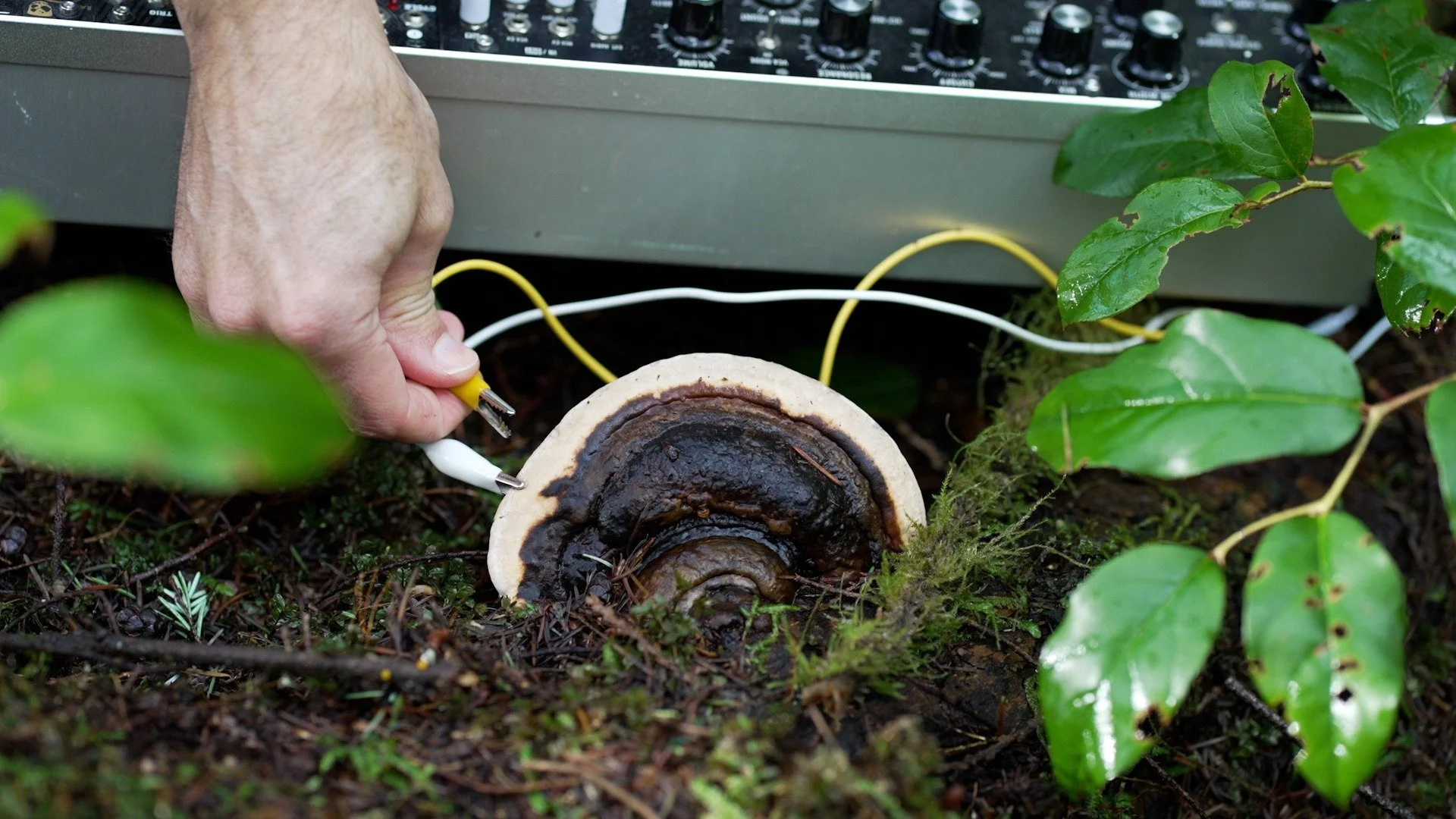Mushroom magic as Tarun Nayar unites his love of music and the natural world in Modern Biology
At Indian Summer Festival, the oceanology grad and tabla player uses fungi and plants’ bioelectrical impulses to create his scores
Tarun Nayar.
Indian Summer Festival presents Modern Biology at Performance Works and Ron Basford Park at 4 p.m. on Sunday, July 10
GLOBAL TIK-TOK star Tarun Nayar is famed for making electronic music, but his natural environment isn’t the recording studio or the DJ booth at a packed and sweaty nightclub.
Although he’s no stranger to either of those, these days he’s more likely to be found in some leafy glade, standing in front of a bank of modular synthesizers, with yards of patch cables plugged into…
A mushroom?
Or a maple leaf, a fern, or a living shrub. Having already studied the intricacies of North Indian classical music as a tabla player, toured the world with his pioneering ethno-fusion band Delhi 2 Dublin, and earned a masters degree in oceanography from UBC, Nayar has now found a way to unite all of his interests by letting the natural world take the lead.
Electronic sensors read bioelectrical impulses within organic material.
With Modern Biology, the immersive indoor-outdoor concert experience he’ll present as part of the annual Indian Summer Festival, he’s enlisted science and a variety of nonhuman entities as his collaborators, and the results are both beautiful and fascinating. Nayar stops short of attributing aesthetic consciousness to the plant materials he’s working with, but he stresses that he’s not the only one making decisions during their work together.
“That’s what has really made me fall in love with this particular form of expression and creation,” the Vancouver resident explains from Montreal, where he’s visiting his parents. “It’s that I’m not making the melodies, and I’m not making the rhythms. I’m definitely making subjective decisions around the timbre of whatever sound or synthesizers I’m plugging these things into. And then, especially when I’m playing live, I’m usually supplementing them with textures and other things to sort of flesh out the sound. But it’s so refreshing and non-self-referential to not be responsible for most of the stuff that’s coming out of it. Like, there’s no chorus, there’s no hook: there’s very little human-ness, as it were, in these compositions. And that also influences the way that I can go back and listen to them over and over again, because it’s not really me that’s being represented. It just feels like something completely different.”
In practical terms, Nayar is using electronic sensors to read bioelectrical impulses within organic material. Those impulses then take on the role of a keyboard in more conventional electronic music, controlling the pitch—along with other parameters—of the sounds produced.
“The technology I’m using right now is quite old: it goes back a couple of decades,” he says. “But there are a lot of new advances being made, and not just for music. They’re also being made for looking at plant neurobiology, which is a field that was not really given any respect at all until very, very recently—this idea that plants have analogous nervous systems and are using electrical impulses to communicate with themselves and with each other. Being able to listen to that and record those action potentials is something that has become really interesting for scientists. And, honestly, what some people do is just literally plug cables into plants and amplify them through a massive amplifier. As the plants are firing action potentials, you’re hearing amplified electrical activity.
“But the technique that I use involves changes of conductivity over time,” he continues. “With plants there are lot of processes that are happening in the organism while we’re sitting with it. These can be bioelectric changes; they can be water uptake; they can be plants drying out. And those bioelectric changes are being converted into CV [control voltage] changes, like note changes.”
Nayar enjoys tuning his modular electronics to the scales used in Indian classical music, which are themselves designed to invoke the feeling of a particular time of day.
“For example, if I’m working in the morning, I might choose Bhairavi, because that’s a morning raag,” he says. “And if I’m working in the afternoon, I could choose Bhimpalasi, which is an afternoon raag.”
This, in turn, will allow the plants to link up with Nayar’s other collaborator in Modern Biology, sitarist Sharanjeet Singh Mand.
“Sharanjeet is a true artist,” Nayar enthuses. “I’ve never performed with him, but I’ve been aware of him in the scene for many years, and he seems like such a pure soul. He really has no interest in doing anything that’s not in line with a fairly pure interpretation of Indian classical music.”
And while jamming with plants, let alone working with modular synthesis, might seem like an odd departure from tradition, Nayar is sure everything is going to fit.
“I don’t think we’re going to do a whole lot of practising,” he says. “I think we’re just going to make sure that the sound works okay, and then we’re just going to improvise in the true spirit of Indian classical music and see what happens. And, again, there’s also a kind of spiritual idea in Indian classical music and Indian philosophy in general about the importance of vibration and ‘Om’ and all of these things. So there’s this circularity here, and a chance to incorporate those ideas into this practice through electricity and vibration and sound and contextuality and raga. I don’t know where it’s going, but it’s a lot of fun!”















